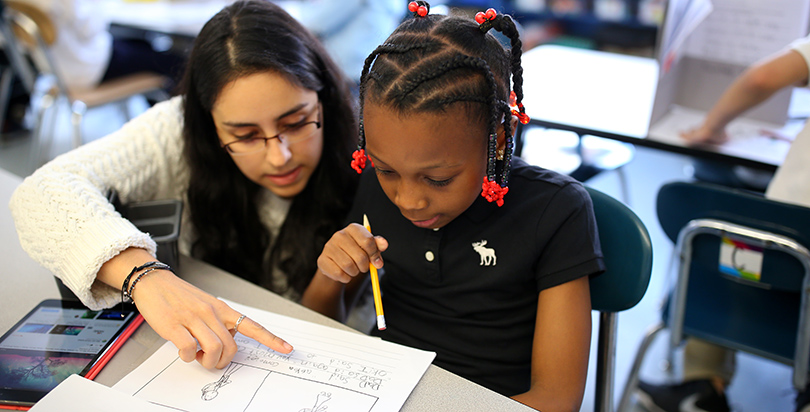It works to ensure that students sit quietly and pay attention. It works to focus their energy on the next test or exam. It works to keep everything the same.
Now imagine a coach. You might picture a sports team with someone on the sidelines providing feedback and encouragement. On the field, you picture a united effort and a shared goal between athletes and coach. It also works.
It works to create players who feel responsible for their contribution. It works to develop a mindset of progress and collaboration.
In the space between these two approaches are teachers who coach.
Coaching is a method for helping move someone from A to B. It is not about presenting specialized knowledge (of geography or biology or calculus) or giving answers. It is about setting students on a path toward reaching a goal. This teacher engages in conversations that lead students toward insightful action. Students then have ownership over their learning and are accountable for their growth.
Imagine a classroom where the teacher believes that students have all the answers, that they are capable and whole. In this space, the teacher’s role is to ask, not tell. They know their students already have — or can find — the resources they need to take the next step in their learning. They connect and partner with their students, tapping into their innate desire to develop and grow. The journey from A to B (whether enhancing literacy or building a suspension bridge or solving an equation) is individual and tailored on a needs basis.
In short, a teacher who coaches focuses on facilitating learning and development. The goal is to help students improve their own performance.
As a result, the classroom is more flexible and open than the more traditional model. Its culture is one of shared responsibility, with an ongoing feedback loop between teachers and students.
What do coaching teachers look like? For one, they offer more questions than answers. For example, when a student feels stuck and seeks direction, the teacher might ask, “What do you think is holding you back?” This helps the student reflect and find a way to move on. The question also focuses more on the person than the problem. The idea is to plant some seeds for students to water so they can find their own solution.
Coaching teachers know the difference between effective (open and generative) and ineffective (closed and judgmental) questions. They use mirroring statements, reflecting the student’s own language back in order to build understanding together. And they show students how to adopt different lenses so they can see various ways around a learning problem.
When coaching is embedded in the culture of a school, there are significant improvements in student achievement, confidence, motivation, and self-awareness. Learners become more resilient and resourceful as teachers move from the front of the room to the sidelines, from standing above to standing with.
When teachers coach each other, they become more comfortable with change and more adept at providing feedback. Like the classroom, the school as a whole becomes more flexible and open — more focused on learning partnerships than hierarchies, on growth rather than the status quo.
Schools with an established coaching culture have crafted new policies for how to conduct a meeting with parents, how to advise students, and how student leaders engage with their peers. Coaching reaches well beyond the classroom to build trust and deepen relationships at every level. It improves the communication, leadership skills, and well-being of all members of the community.
Think about your favorite teachers from when you were at school. If you work in a school, also think about what makes some of your colleagues so effective.
Quite likely, they coach.
Early education reformists like John Dewey, Maria Montessori, and Johann Heinrich Pestalozzi believed in the power of experiential and heart-based learning. Their life work was about encouraging children to do, not simply to listen. But sometime in the past 200 years, we lost touch with this.
Adopting a coaching approach provides the opportunity for a radically different education system, taking the best of the past into the future.
After all, the word “education” is derived from the Latin word ēdūcō, which means to lead out. If we want to move education forward, we may, in fact, need to reconnect with one of its oldest traditions: teachers who coach.
Get stories like these delivered straight to your inbox. Sign up for The 74 Newsletter


;)
